Behind the Scenes of Making a Clean Beauty Product
Q&A with a beauty industry exec about the "clean beauty" products we see everywhere
Throughout my years-long quest to find natural, clean solutions for healing my acne-prone skin, I’ve tried hundreds (maybe thousands) of skincare products. I’ve committed myself to being the guinea pig that will put pretty much anything on my face in an effort to figure out what works for me–and then sharing my results with you. Eating a gluten-free, dairy-free, refined-sugar free diet was the biggest change I made to dramatically improve my skin but I’ve also noticed that the ingredients in beauty products play a major role in how much and how often I’m breaking out.
One of the things that has always confused me is what “clean” beauty really means. Does it mean vegan products? Non-comedogenic? Non-toxic? There are a multitude of certifications that beauty companies can slap on their labels and an even larger number of claims made about what’s best for your skin.
As many of you know, my latest obsession is trying to find a tinted SPF that both works and won’t break me out. In my mission to immerse myself in the clean beauty world I had the fortune of meeting Melissa Coppola, a product development executive with years of experience in formulating some of the most popular–and cleanest–products on the market. If you’ve tried products from Glossier, One/Size, or Curology, then you’ve experienced her work! I interviewed her to learn more about the opaque yet incredibly lucrative industry that is clean beauty. Thank you, Melissa, for sharing your deep expertise with us!
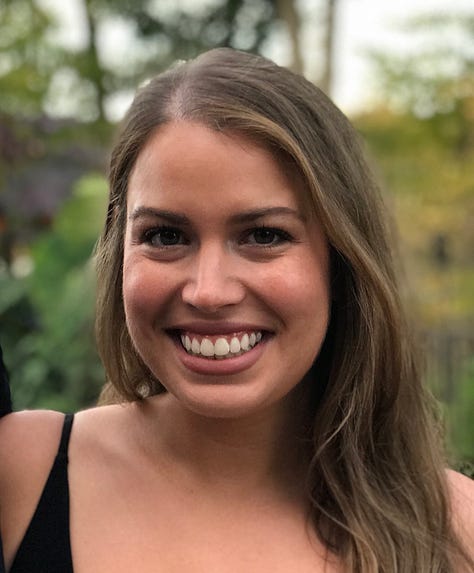
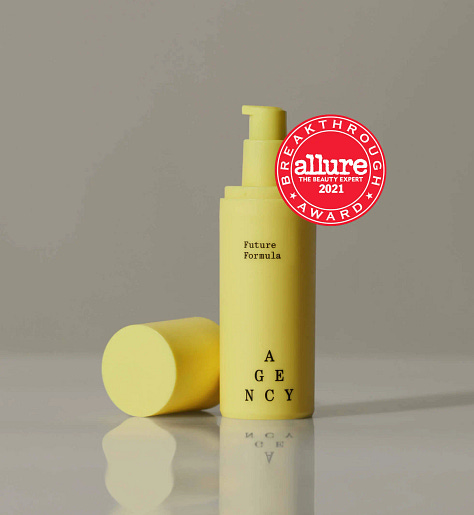
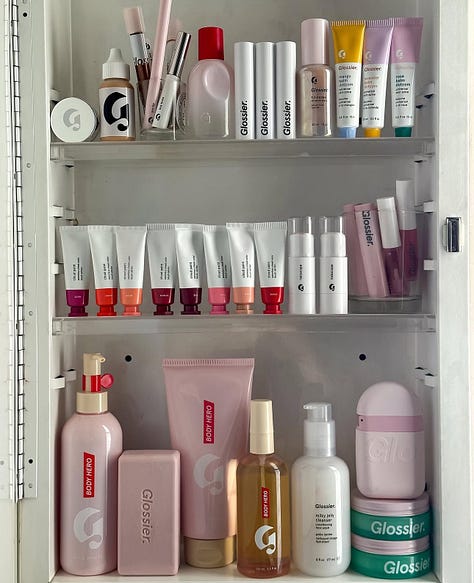
Q: What is your personal story with clean beauty? What piqued your interest in creating good-for-you products?
I was fortunate enough to start my career in beauty right after graduating college (actually, even beforehand, since I interned the summer before and throughout my senior year at NYU). I quickly realized that most brands take a marketing-first approach to product development. While I loved the product and brand marketing parts of my job—like coming up with a product concept, name, and overall positioning (in the portfolio and market)—I was equally, if not more, interested in the process of designing the formulas themselves. When I finally got the opportunity to add Product Development to my scope of responsibilities, I decided I was always going to take a product-first approach (seems intuitive, right?). That ethos has been at the heart of my PD philosophy ever since. Then, when I got pregnant, my interest in understanding the products and ingredients I used reached a whole other level. The stakes felt even higher!
Q: Let’s get right to the point: how would you define “clean beauty”? Why are there so many different definitions out there, and how should shoppers figure out what’s best for their skin?
That is such a tough question. Many brands have framed “clean beauty” as a cut-and-dried concept when it’s really just a marketing strategy. Since there is no official definition of what it means to be “clean,” brands are free to make up their own rules. This becomes problematic when those rules aren’t grounded in evidence-based research or science; in those instances, “clean” claims are often nothing more than fear-based marketing designed to make a brand’s products more appealing. The reality is that every retailer (Sephora Clean, Target Clean, etc.) and every brand has their own idea of what it means to be “clean,” making it incredibly difficult for consumers to cut through the noise. Personally, I look for products that use evidence-backed, clinically proven ingredients–that’s my own definition of “clean.” As long as an ingredient has been studied and proven effective and safe, I’m ok using it!
My advice is to first think about what is important to you when it comes to your beauty products. Is it that a product is vegan? Cruelty free? Non-comedogenic? For sensitive skin? After answering that, focus on buying from brands that are transparent about their definitions of “clean”—ones that don’t make you go digging through ingredient lists (unless you have an allergy, of course) or decode chemical names. A brand that is right for you will be clear and upfront about what they stand for and how they approach their product development.
While the safest bet is consulting with a dermatologist on a personalized treatment plan, that’s not always realistic. Instead, I also recommend buying from brands that meaningfully involve dermatologists in their product development process.
Q: How do you go about creating a beauty product from scratch, and how long does it take? Walk me through the process from ideation to creation.
Timelines vary greatly from product to product. There are so many factors to consider—formulation complexity, product category (over-the-counter vs. cosmetic), testing requirements—but I’d say the average for most brands is 18 months from concept-to-launch. It can be as short as 6 months (essentially white labeling a brand onto a stock product that’s already been developed and tested) and up to 3+ years if it’s truly innovative.
Creating a beauty product from scratch is first about finding inspiration. When I’ve worked with founders in the past, I’ve found that creative spark often comes from asking two pretty simple questions: What don’t you like about the products you’re currently using, and what type of product do you wish existed today? Chances are if they want a product like that, others will, too! After naming the problem, we dive deep into the world of products in that space, evaluating what we like and don’t like about the ones that are already out there. Slowly, it becomes clear what our solution is and why it could be better than what’s currently on the market.
From there, we work with partners (labs, suppliers, vendors) to find new and exciting ways to bring that solution to life. That includes everything from iterating on formula submissions to customizing packaging to testing for product claims. Best-in-class brands also do an exceptional job of involving their communities to understand what’s important to them and then incorporate that point of view into their product development process.
Q: How does that process change with a clean product vs. a more traditional or non-clean product?
Because the term “clean beauty” is more marketing than anything else, the process itself doesn’t massively change when developing a “clean” vs. “non-clean” product. The biggest “formal” difference is that clean brands tend to invest more time and energy on first defining their product standards and then working with third-parties to substantiate / validate / “prove” them. It’s really about feeling grounded in the mission / reason-for-being and ensuring each formula reflects their commitment to that ethos.
Q: Is there anything you wish people knew about beauty product development? What’s the “best kept secret” of PD?
It’s still wild to me that the majority of our beauty products come from the same handful of contract manufacturers. A lot of the things you see on shelves are virtually the same in terms of formulation. What’s different is the marketing. When a brand touts a “new technology” or “proprietary complex,” more often than not it’s to appear innovative rather than actually be innovative. It’s why I love a good dupe or drugstore product – price does not always equal efficacy, sometimes you’re just paying for good marketing!
Q: What are some shortcuts that beauty companies take when they don’t care about making the product clean?
There are many companies that do what we call “sprinkling in marketing ingredients”. That’s to say, they’ll take a stock formula (which means any brand could use the same formula and there is nothing custom or proprietary about it) and add in very, very low levels (a dusting, if you will) of “clean” ingredients just to be able to speak to them. You’ll see many brands put these ingredients at the front and center of their marketing even when they’re not at any effective level. Usually it’s the more luxurious or hi-tech sounding ingredients that companies put at the forefront of a product’s positioning. Ingredients like rosehip oil ($$) or collagen (not proven to work topically) come to mind. And you’ll notice that many times those ingredients are not at the top of the ingredient list, rather the middle or towards the bottom. That’s because in the US, regulations require a brand to list the ingredients in order of concentration. However, below the “1% line” is free rein, meaning they can list in whatever order they want. So, it’s really difficult to understand if an ingredient is at an effective level unless a brand is upfront about it.
Q: Where do you see there being even more innovation in the near future?
I see a ton of innovation already in the sunscreen space, which I imagine will only continue. There are already such great sunscreen filters outside of the US (Japan and Korea, in particular, have amazing sunscreens) that we’re hoping will be available for us to use here soon. Thankfully, sunscreen usage is on the rise (especially among younger people), and I think that demand is pressuring the market to level up its offerings. Hopefully heavy, greasy sunscreens will soon be a thing of the past!
Another area that’s growing tremendously is fragrance. That category has historically been a black box of sorts as brands have not been (and are still not) required to disclose the components of fragrances on ingredient lists (you’ll notice it only says “fragrance”—and you’d be amazed what they can hide in there). But it’s a space that is finally modernizing and becoming cleaner and cleaner. It’s cool to see so many fragrance brands evolve and new fragrance brands pop up.
Q: What are the ingredients that people should avoid without exception?
There are very few ingredients that everyone shouldn’t use. Luckily, those are typically restricted from being used already! If you’d like to be more conservative than the US standards, I’d opt for products that are compliant with EU regulations. For example, most parabens (thought to be endocrine disruptors) are banned (or at the very least restricted) in the EU but allowed in the US. And there are certain silicones (known as D4, D5, D6) that are not allowed in Europe but are widely used in US cosmetics.
I’m all about making decisions that are evidence-based vs. out of fear. As we’ve already discussed, we see a lot of brands using fear-based marketing designed to make you feel like you have to buy their product because it doesn’t contain XYZ ingredient(s). In reality, it’s more nuanced than that. For example, not all fragrances are irritants for everyone, and silicones are actually not pore-clogging (they act as a wonderful skin protectant and barrier repair while providing amazing sensoriality). My advice is to choose what’s best for your skin—and, when in doubt, use products that have been formulated for and tested on sensitive skin.
Q: How does pregnancy affect the types of ingredients or products you should use or avoid? (Not only am I in my third trimester, but you recently had your first child as well!)
I’m going to be completely honest, this was such a hard area to navigate for me. And that was a big surprise because I thought it would be a lot easier given my background! My OBGYN provided me with a short list of ingredients to avoid (retinoids and chemical sunscreens), and that was really it, no other guidance. But I’m generally a very risk-averse person and this was a time where my risk tolerance was at an all-time low. So, to be extra safe, I did a lot of my own research and added a bunch more “no-nos.”
I focused on hydration and barrier protection while I was pregnant and dropped all of my more robust treatments. Instead, I purchased simple, pared down formulations that centered around a singular treatment ingredient. I used to be a religious tretinoin (prescription retinol) user. Every night, I would use Curology’s Custom Formula Rx (mine was a combination of tretinoin, azelaic acid, and niacinamide). In its place, I switched to using the Inkey List’s 10% Azelaic Acid Serum (my dermatologist said azelaic acid was the closest thing to tretinoin I could use while pregnant, but honestly nothing compares to that tretinoin glow ☹ ) + Kiehl’s Ultra-Pure High Potency 5.0% Niacinamide Serum. I traded out my moisturizer and replaced it with Curology’s Cream Moisturizer. Then I sealed it all in with a barrier balm (rotating selection).
An amazing resource for me while I was pregnant (and even now that I’m breastfeeding) was 15minbeauty.com. I look up every product on there, makeup and skincare. It’s a site where they review ingredient lists and categorize a product as “safe” or “not safe” for pregnancy and nursing. It also indicates what ingredient is the “offender.” After looking up so many products on there, I quickly began to form my list of ingredients to avoid and found safe-for-pregnancy alternatives. I still use several of those products and plan to continue using them, so I’m thankful for that discovery!
Q: What are some of your favorite clean beauty staples?
Even though I’ve always tried a ton of products for work, my own routine is surprisingly minimal. I always start with Agency’s Cloud Care Cream Oil Cleanser (included in my wedding welcome bags and was a big crowd pleaser) to remove impurities and light makeup. I use Skinceuticals CE Ferulic (it’s a cult classic for a reason) as my day treatment and apply a powerhouse night treatment before bed (I’m not yet back to my mainstay Curology, so I still have a rotating cast of products for this step). I moisturize with a basic moisturizer, since I find that more than does the trick: either Curology’s Hydro+ Gel Cream Moisturizer or Cream Moisturizer. For the day, I top off with a tinted mineral sunscreen to get that 1-2 punch (plus, I’m wearing so much less makeup these days as a new mom, this is functional and gives me some light coverage). I’ve also been inspired by your own skin journey and have been trying out a few of your favorites! At night, I seal everything in with Aquaphor or Vaseline–very unfancy of me, but it’s made a significant difference in repairing my skin barrier and keeping my skin soft and glowy.
Q: Are there some good resources for people to consult when they’re shopping for new products?
A good place to start is to find a creator that has similar skin concerns to you. They get to try a lot of products and can identify the good ones. I save a bunch of my favorite creators’ Tik Toks (I’ll basically buy anything Kelli Anne Sewell shares), keep a running list of products to buy, and then do a massive haul to test them all and see what works for me. Another under the radar resource is cosDNA.com. It’s pretty technical but is very comprehensive in showing the level of “clean” a product is so you can make confident decisions when curating your own beauty shelf.
Thank you, Melissa! If you’ve got more clean beauty questions for us, drop them in the comments!


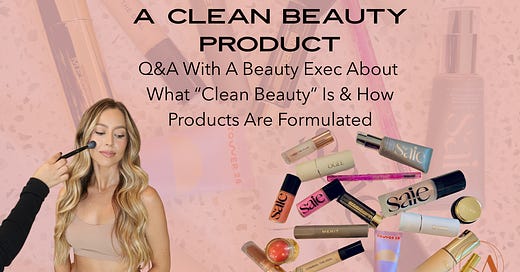




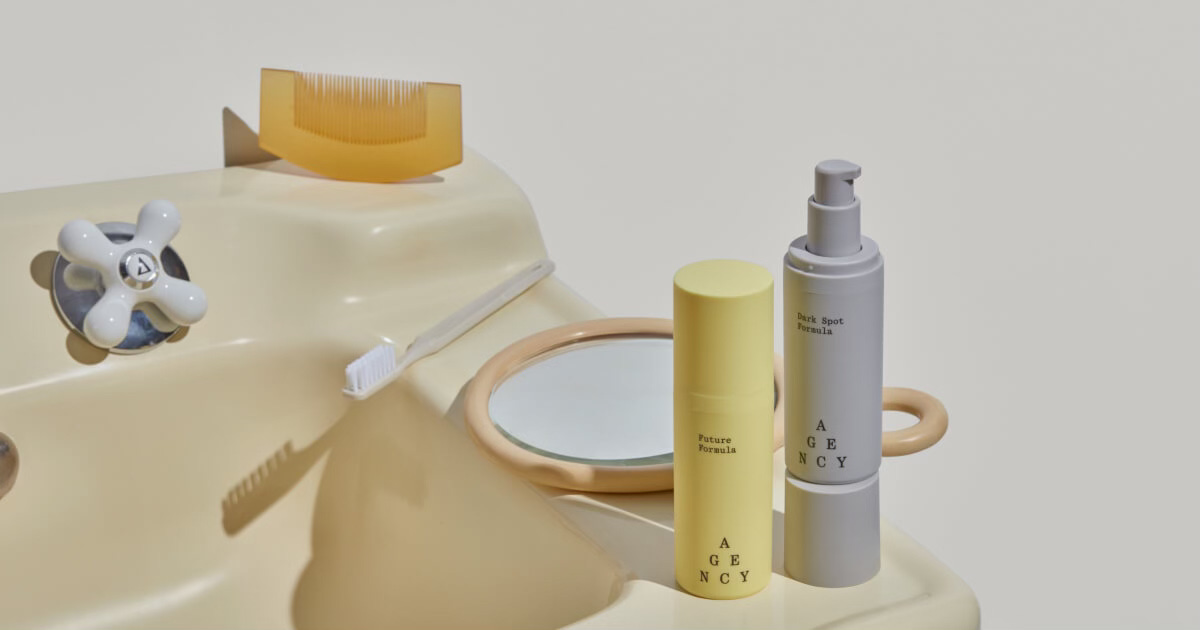
This was great! And an amazing resource! Thank you both for sharing!🤍🤍
Thanks for this, Olivia! Loved hearing the specifics of a cosmetic product developer's job.